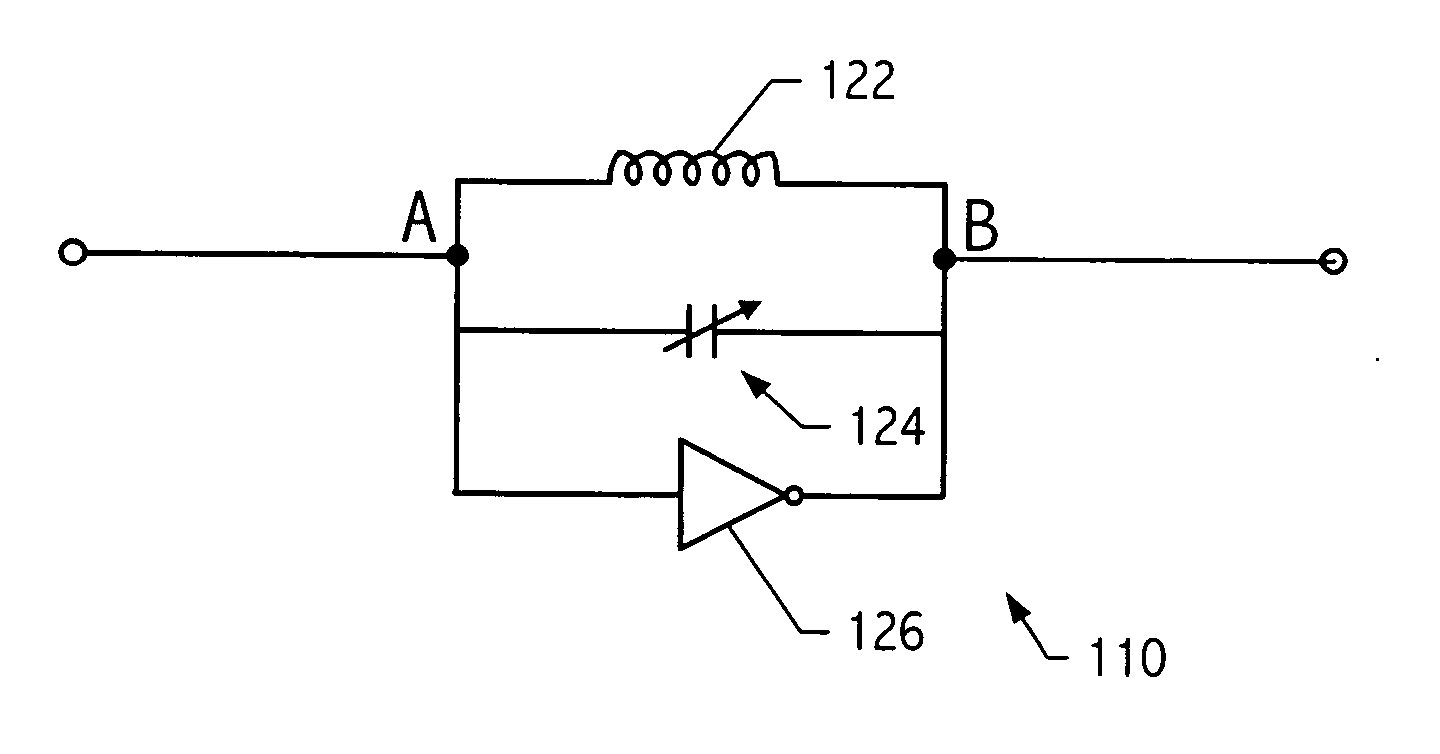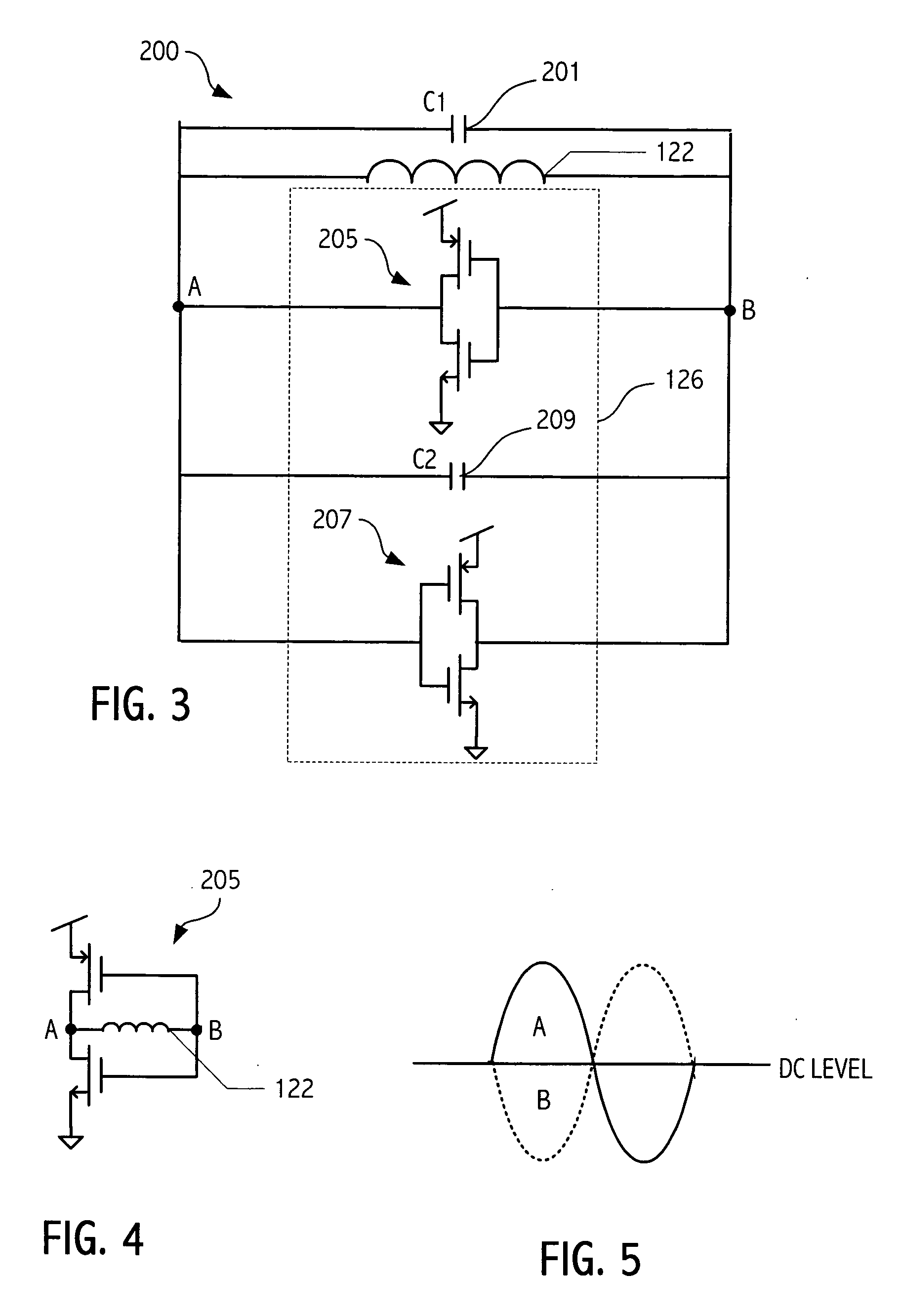Push compensation in an oscillator
a push compensation and oscillator technology, applied in the direction of oscillation generators, angle modulation details, modulation, etc., can solve the problems of direct frequency change, power supply voltage drop, and even more difficult to meet specifications, so as to reduce power supply noise, reduce oscillator circuit output variation, and reduce supply noise
- Summary
- Abstract
- Description
- Claims
- Application Information
AI Technical Summary
Benefits of technology
Problems solved by technology
Method used
Image
Examples
Embodiment Construction
)
[0025] Referring to FIG. 2, an exemplary VCO circuit is shown. The exemplary VCO circuit is an LC tank circuit and includes an inductor 122, a variable capacitance circuit 124, and a gain or amplifier circuit 126. The output of the VCO can be varied by varying the capacitance circuit 124 in accordance with the control voltage supplied on node 118 (FIG. 1). The oscillating frequency of the VCO is proportional to √{square root over (1 / LC)}.
[0026] Referring to FIG. 3, the VCO is shown in more detail. The amplifier circuit 126 includes the inverters 205 and 207. Capacitance is also associated with the amplifier circuit and is represented as capacitance 209 (C2), which is the effective capacitance of the amplifier 126. The capacitance 201 (C1) represents the capacitance of the VCO that is varied to control the VCO output and is relatively constant with respect to supply voltage. The total capacitance of the tank circuit C=C1+C2, where C1 represents the capacitance associated with the v...
PUM
 Login to View More
Login to View More Abstract
Description
Claims
Application Information
 Login to View More
Login to View More - R&D
- Intellectual Property
- Life Sciences
- Materials
- Tech Scout
- Unparalleled Data Quality
- Higher Quality Content
- 60% Fewer Hallucinations
Browse by: Latest US Patents, China's latest patents, Technical Efficacy Thesaurus, Application Domain, Technology Topic, Popular Technical Reports.
© 2025 PatSnap. All rights reserved.Legal|Privacy policy|Modern Slavery Act Transparency Statement|Sitemap|About US| Contact US: help@patsnap.com



